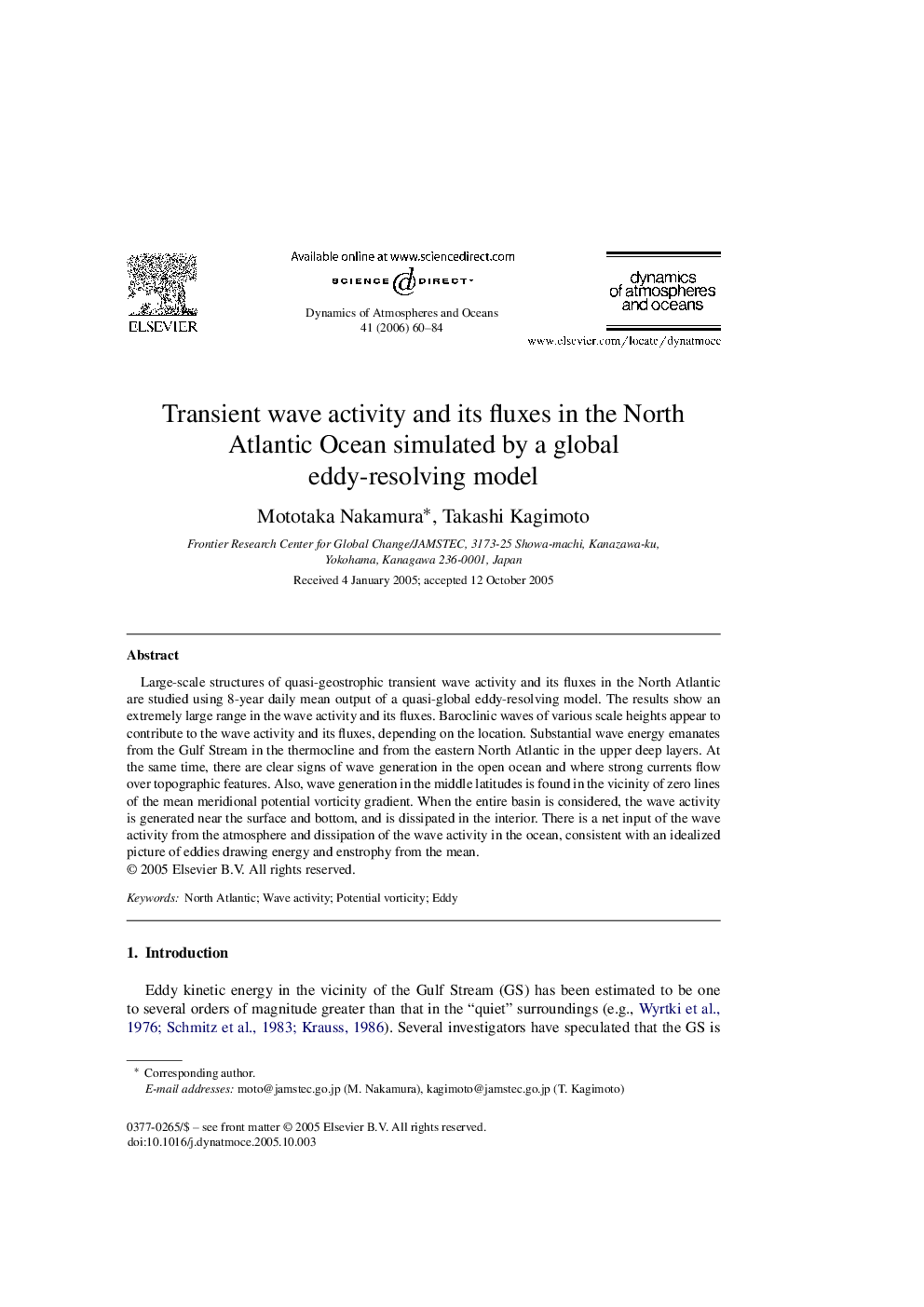| Article ID | Journal | Published Year | Pages | File Type |
|---|---|---|---|---|
| 4674310 | Dynamics of Atmospheres and Oceans | 2006 | 25 Pages |
Large-scale structures of quasi-geostrophic transient wave activity and its fluxes in the North Atlantic are studied using 8-year daily mean output of a quasi-global eddy-resolving model. The results show an extremely large range in the wave activity and its fluxes. Baroclinic waves of various scale heights appear to contribute to the wave activity and its fluxes, depending on the location. Substantial wave energy emanates from the Gulf Stream in the thermocline and from the eastern North Atlantic in the upper deep layers. At the same time, there are clear signs of wave generation in the open ocean and where strong currents flow over topographic features. Also, wave generation in the middle latitudes is found in the vicinity of zero lines of the mean meridional potential vorticity gradient. When the entire basin is considered, the wave activity is generated near the surface and bottom, and is dissipated in the interior. There is a net input of the wave activity from the atmosphere and dissipation of the wave activity in the ocean, consistent with an idealized picture of eddies drawing energy and enstrophy from the mean.
